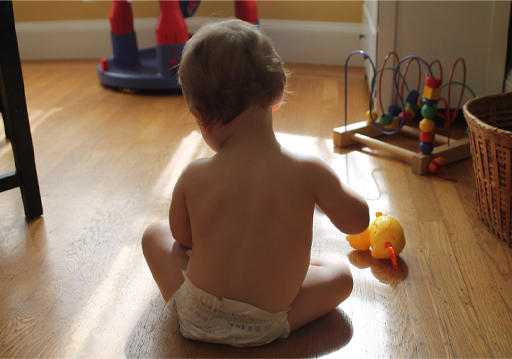Session 2: The missing babies
Introduction
In the previous session you were introduced to some key messages in the research literature about young children’s engagement with the outdoors and nature. This session will dig deeper into research to find out how policy can impact on practice. In 2019, two authors of this course (Nicola Kemp and Joanne Josephidou) decided to carry out a piece of research with this focus. They were funded by The Froebel Trust; you will find out much more about this charity in Session 3, but you may recall that Friedrich Froebel was one of the important historical voices mentioned in Session 1. Kemp and Josephidou were interested in the seminal work by Goouch and Powell (2013) into practice in Baby Rooms. This is the name often given to a place in English Early Years settings where the youngest children are looked after.
When Goouch and Powell (2013) looked at the needs of children in the Baby Room, they wrote:
We know that babies learn through watching, conversation and experience. Significantly, we also now understand from research that how babies are cared for in their first year of life, the amount and level of their interactions, their physical, social and emotional encounters all contribute to their development, their growing sense of self, of who they are in relation to others and to the growth of their brain.
Although Goouch and Powell found out a great deal about what happens inside a Baby Room, they realised they still had many questions about what happened outside – or indeed if the children did have experiences outside. Yet, when owner/managers were asked what the ‘perfect baby room’ would be, many of these spoke about having ‘ease of access to an outside area, preferably a garden, dedicated to the babies’ (2013, p. 68).
Kemp and Josephidou decided to build on Goouch and Powell’s research and find out what happened to young children (birth to two years) when they were in formal daycare settings (England) in terms of their outdoor engagement. Were they taken outdoors? If so how long for? Did it depend on the season? What did they do when they were outside? You can read about some of their findings in the content of this session.
By the end of the session, you should be able to:
- describe why young children (birth to two) can be missing from research and practice in this area
- outline why the outdoors is seen predominantly as a place for physical development
- identify concerns about risk for young children outdoors.
Before you begin the session, listen to this audio introduction by the session author Joanne Josephidou.
Transcript
JOANNE JOSEPHIDOU: In the previous session, we thought about different cultural practices with babies. And in this session, we are particularly interested in what happens in the early years setting.
You may remember from the introductory video to this course that the first key finding from our research project was that babies often appear to be missing from international research into young children's engagement with the outdoors. And this finding made us wonder if they were also missing from practice.
For example, researchers observing in early years settings seem to assume that the outdoors is only relevant for children who were walking. Even in studies which claimed to include children as young as six weeks old, physical mobility, such as climbing and running, took priority. And information about babies was not included in any analysis of data.
In research papers that discussed babies physical activity, there seemed to be an implicit assumption that this took place indoors. As we examined the research looking for evidence of under twos in outdoor practice, we were left wondering, where are the babies? And why are they missing from research? Does this also mean they are missing from practice?
These are questions we will explore in this session. You will be able to watch Professor Tina Bruce, a visiting professor of early childhood studies at Roehampton University, sharing some examples of practice that she has observed with babies.

